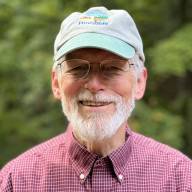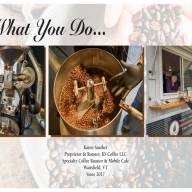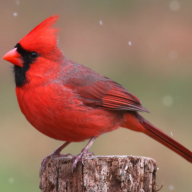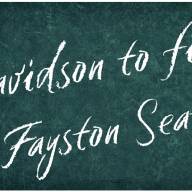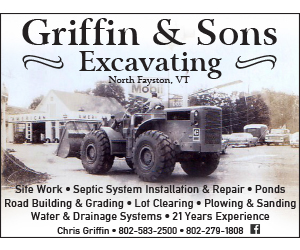The life path of Charlie Hosford, taking him from his Texas birthplace to the Mad River Valley, has been on a road that is anything but straight forward. His parents were New Englanders, but the Depression sent them to the only place his dad, who grew up on a farm, could find work. Exempt from WWII military service having had polio, his dad worked in civil defense and his mom, one of nine children, collected sheets and made bandages.
When Charlie was 4, the family moved to his mom’s birthplace, Amherst, Massachusetts. They found a dilapidated, abandoned farmhouse and, with very few resources, began making it a livable home. They acquired a full array of animals and had a victory garden they shared with others. Young Charlie was in charge of the stamps in their ration books. He witnessed how his parents recycled everything as there was always a need to fix things. He recalled the coal stove they added to the old barn and how he and his two brothers sifted through the ashes for any pieces of coal that could be reused. There was never anything new. The beverage offered to his friends was goat milk which did not make him very popular. They raised rabbits for food and only with his giving out their feet for good luck, did his popularity increase.
Charlie describes his mother as active in their community and a “self-appointed, person in charge,” never allowing disrespect for people or property. His dad, always working hard whether growing their food or fixing things, would take his three sons to collect old newspapers for payment.
“The defining words describing what I learned early on were frugality, resilience and sharing. Growing up was an adventure in acquiring skills,” Charlie said. He and his brothers delivered morning, evening, and weekend papers on their bicycles – often enduring dog bites. The bikes were made of scraps they found at Friday night auctions and other parts purchased with their paper route money.
The old house forced the family to deal with wildlife – even a family of skunks that resided under them. The farm animals taught Charlie other skills – like how to successfully operate on a crop-bound chicken allowing it to return to laying eggs.
During his high school years, he worked in shade tobacco fields. He did well enough in his studies to be given a full scholarship to Mount Hermon Prep School. There, he had exposure to intellectual pursuits and sports exceeding what he had ever known. He learned to play ice hockey, lacrosse, and soccer – sports that demanded fitness. In 1956, he graduated from Mount Hermon and, also on a full scholarship, went on to Amherst College. After his first year, he had saved enough to buy a three-speed Raleigh bike and told his parents he was going to ride across the country. His mother consented and gave him five penny postcards to send home along the way. He quickly learned there are endless hills and back roads that puncture tires. He slept in barns through Ohio and in midwestern corn fields. He never knew roads could be so straight! The portion of the ride to Denver required pedaling hard into headwinds and up hills. When he reached LA, he shipped his bike home and hitchhiked back with a small handbag and a sign to indicate his desired destination. That trip opened his eyes to the greater world and all the diverse people and cultures it contained. It was his first real exposure to African-Americans who asked him what a white boy was doing hitching in New Orleans. All along the way he loved the music he heard and the local people and customs.
Amherst enabled him more personal and educational opportunities. Joining a fraternity provided friendships and the chance to organize activities. He helped the Red Cross sponsor campus blood drives, and he proved very useful when the frat boys disliked the sound coming from all the typewriters. Charlie volunteered to build a typing room. He loved the effort and the results. His success as the Amherst lacrosse goalie was a complete surprise as was his earning a place on the All-American team. Little did he imagine being recognized for “play.”
His acceptance into the Yale School of Architecture program led to more discoveries. His small classes had students from diverse countries with unique talents and skills. He had professors who taught drawing, perspective, and drafting techniques. Unlike many classmates, Charlie had a background that gave him skills with tools that they mostly lacked. There were many students with nice cars but the best he could do was to acquire and work on an old motorcycle.
Selling hot dogs at the Yale Bowl and working in the Yale Law School dining room gave him his spending money. Importantly, it allowed him to meet Carol Reed who, as a grad student getting a Master of Arts in Education, came to the dining room for meals. By the end of his sophomore year, they married.
During his Yale years, he discovered a talent for creative thinking, and enjoyed complex design and model making. The close working relationships with professors, who were successful architects, allowed him to add to his growing portfolio. By his senior year, he applied for a Fulbright Scholarship. Winning it in 1965, he and Carol sailed with their steamer trunk to Finland. Charlie recalled experiencing a glorious year exposed to fascinating designs in fabrics, glass, and furniture as well as new foods and European travel. Two of his take-aways were learning that in the Finnish culture there was the rule that no gates or fences could exist between properties. Theirs was a culture of sharing. Acquiring a stripped VW bus in Germany, he and Carol traveled and were struck by the openness of people and their willingness to share. These attributes shaped many of their thoughts about what they wished for themselves.
They returned to Carol’s home state of Maine. Charlie, together with some fellow Yale students, designed and built a house that was featured in Life Magazine. About that time, Yale classmate, Dave Sellers, suggested he come to Vermont. Sight unseen, Charlie agreed, knowing he had Carol, he would be doing what he wanted to be doing and in a place purported to be very agreeable. Together, with their new daughter Kate, they ventured to the Mad River Valley.
Please follow Part Two in a coming Valley Reporter to learn of the Hosford’s family’s integration into The Valley.
You might also like





